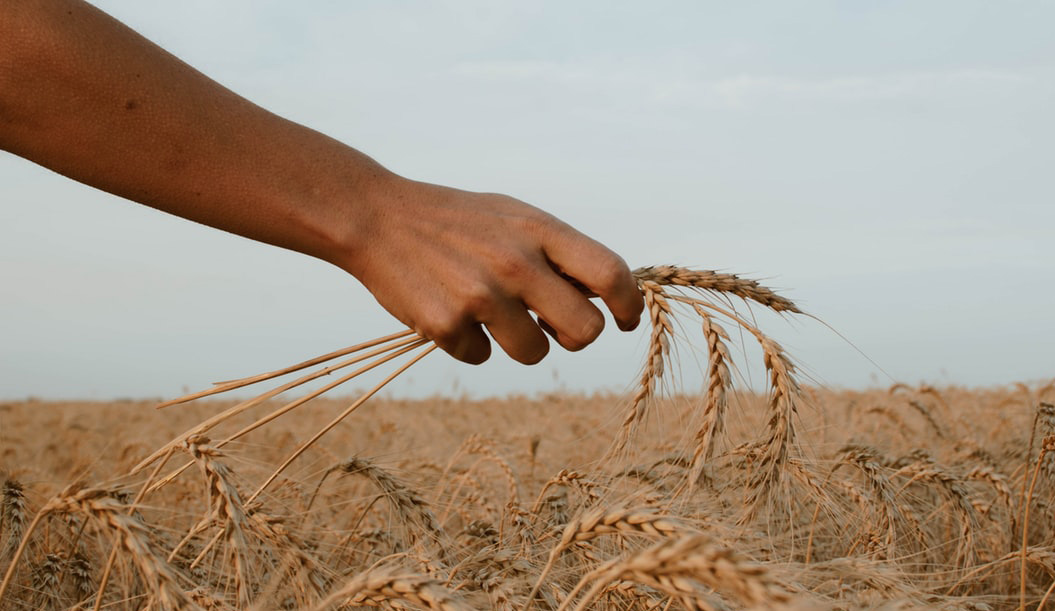We briefly covered some of the different forms of technologies that are used in precision farming.
FIELD MONITORING
1. Crop Health Monitoring (mostly based on NDVI) — Normalized
Difference Vegetation Index (NDVI) is a method that is used to determine the health of crops through the analysis of drone and satellite imagery. It looks at various wavelengths of light, both visible and nonvisible, to make these calculations. This technology can allow you to assess the general health of your crops and detect crop variability.
2. Crop Scouting — This precision agriculture technology also makes use of NDVI, but it is also being facilitated through tablets and mobile phones. Scouters go out in their fields with a tablet and collect important data about their crops. There are some platforms that analyze and make meaning out of this data. This helps farmers monitor pest populations and weed activity on their land, and allows farmers to increase yields and make more money.
3. Yield Monitoring and Forecasting — The yield information can be collected either from satellite imagery and drones or from the sensors installed on the farmer’s machinery. These yield sensors can be attached to harvesters or tractors and collect information on things like grain yield, moisture levels, and more, which allows farmers to make better decisions on when to harvest, plan next season and fertilization, analyze field variability, and many other things.
4. Detection of Diseases, Pests, or Weeds — As you can see, drones have many uses in precision agriculture, and the detection of diseases, pests, and weeds are yet another value that comes from drones and hyperspectral imaging. Gamaya’s hyperspectral camera is the smallest, most lightweight commercial hyperspectral camera that is currently available, and this makes it perfect to attach to drones and nanosatellites. Gamaya’s camera is tightly integrated with proprietary software to translate raw data into actionable information for farmers.
5. Weather, Irrigation, and Soil Quality — Ground-based and plant sensors are used to collect information about the soil and water. For soil, some of the things these sensors measure are texture, organic matter, salinity levels, and nutrient status. Weather stations are used to gather appropriate weather data, which allows farmers to see how different weather patterns may affect their water and soil. There are many different technologies for irrigation, but one very useful one is called drip irrigation, which allows farmers to irrigate their land by the use of pumps and valves that can be manually or automatically controlled.
DATA MANAGEMENT
1. Farm Management Software Platforms — Farm management software platforms are just what they sound like — platforms that help farmers manage their crop production. These platforms (i.e. Granular) integrate with the different hardware devices that are used in precision agriculture. The data from these devices are aggregated onto the central platform where they can be processed and analyzed to help farmers make better decisions on how to manage their operations.
2. Data Platforms — Outside of farm management solutions, there are data platforms like Field View from Climate Corporation and Farmers Business Network, whose focus is more on data aggregation so that they can provide data to farmers as a resource. They also want to give farmers a central location where a multitude of information sources come together to provide an overall picture of the industry.
VARIABLE RATE APPLICATIONS (VRA)
Variable rate application in precision agriculture focuses on the automated application of materials like herbicides, chemicals, and seeds to a landscape. These materials are applied in an automated fashion, which is based on data that is collected by sensors, maps, and GPS. This process involves different forms of precision agriculture technologies like multispectral and hyperspectral cameras, satellite imagery, and application machinery on tractors. VRA is one of the main features of precision agriculture, that allows optimizing the use of chemicals, fertilizers and other resources.
AUTOMATION IN AGRO MACHINERY
1. Farm Robots — Robots are used in many industries to automate different tasks. In farming, robots are used for a handful of reasons, but one big use is the automation of weed management. Blue River Technology and Ecorobotix are two companies that have developed robots that use cameras to identify weeds in real time and will make decisions on how they should deal with them.
2. Guidance Systems Based on GPS — Just as it sounds, GPS technology is used to guide automated machinery and vehicles in things like auto steering, high navigation and positioning, and more.
3. Telematics — This involves machine-to-machine communication between the hardware and sensors that are involved in automation. For example, when a camera identifies a weed, it needs to communicate this information to another piece of machinery that can pluck the weed out of the ground or spray it with some herbicide. Telematics is crucial in automation.
4. Precision Planting — Precision planting is an automated approach to optimizing the planting of seeds. It allows for better seed spacing, better depth control, and better root systems. There are many pieces of information that are used to make the proper analysis in identifying the optimal conditions for planting, and this is all easily collectible with the various forms of precision agriculture technology on the market.


